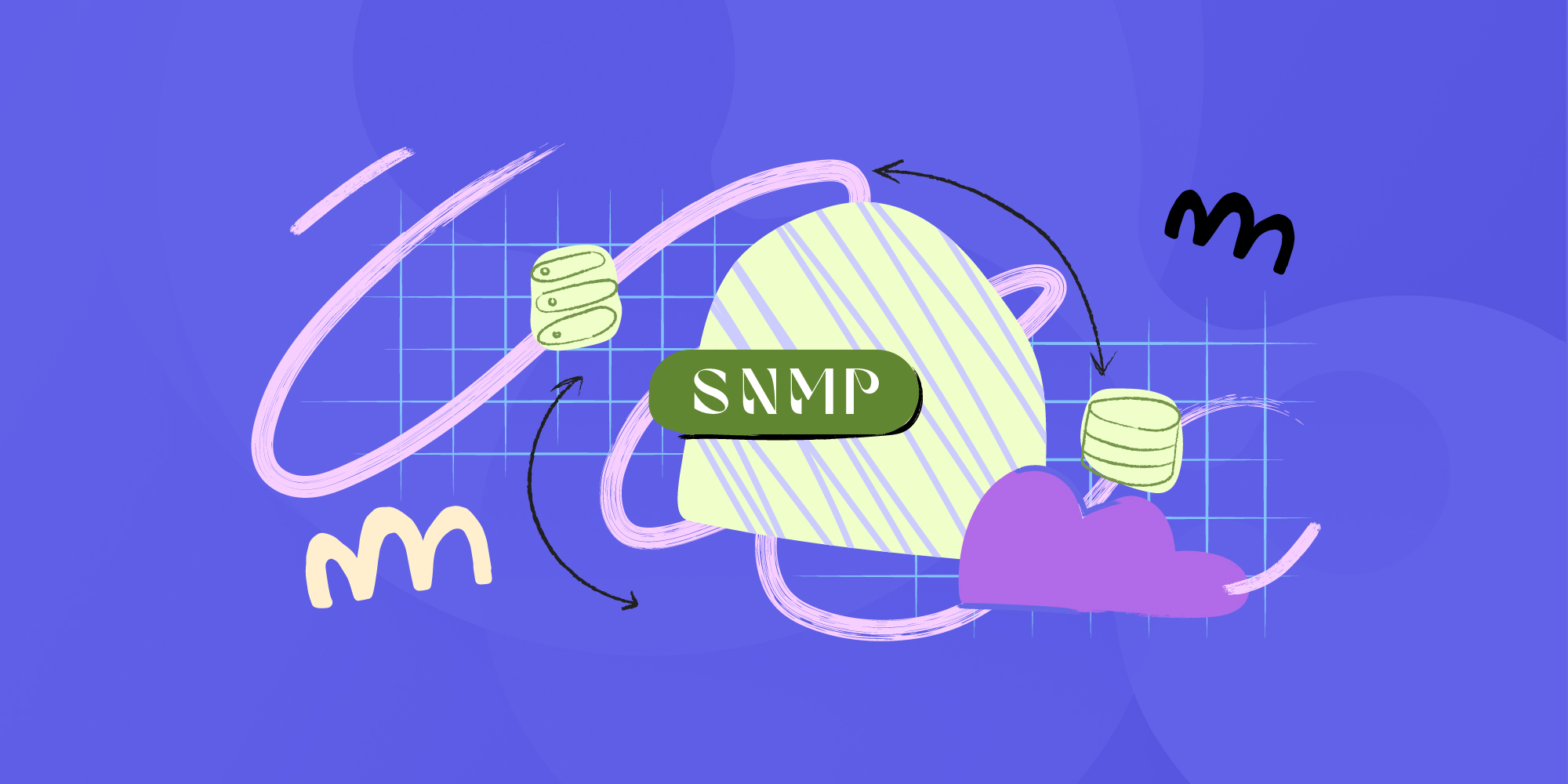When you use the Internet or a company network, have you ever wondered how all those devices communicate and work together? A crucial part of this process is something called a Management Information Base, or MIB for short.
Let’s explore what MIBs are, how they work, and why they’re so important for keeping our networks running smoothly. MIBs play a vital role in network communication by ensuring smooth communication between managed network devices.
What is a Management Information Base (MIB)?
A Management Information Base (MIB) is a collection of information organized hierarchically. The MIB hierarchy is a tree-like structure with distinct levels assigned by different organizations.
In technical terms, an MIB is a structured collection of data that describes various aspects of network devices. It serves as a common language and framework that allows network administrators to monitor, manage, and troubleshoot devices from different manufacturers.
The MIB was initially developed and standardized by the Internet Engineering Task Force (IETF), the organization responsible for developing and maintaining many of the core protocols and standards that underpin the Internet.
The MIB is implemented and supported by the manufacturers of network devices, such as routers, switches, servers, and other network equipment. When a network device is designed and built, the device vendor is responsible for incorporating support for the relevant MIB objects and modules into the device’s firmware or software.
How does an MIB work?
MIBs work hand-in-hand with a protocol called Simple Network Management Protocol (SNMP) to manage a managed device. Think of SNMP as a librarian who can fetch books (information) from our MIB library or update the information in these books.
When network administrators want to check on a device, they use SNMP to request specific information from the MIB. For example, they might want to know:
-
How much traffic is flowing through a particular router?
-
Is a specific switch running too hot?
-
How much ink is left in the office printer?
The MIB contains all this information and is organized in a tree-like structure. Each piece of information has a unique address called an Object Identifier (OID). When SNMP requests information using an OID, it knows exactly where to find it in the MIB.
Components of an MIB: object identifier
MIBs are organized into modules, each focusing on a specific aspect of Network Management. These modules contain managed objects, which represent specific attributes of network devices within the MIB hierarchy.
Managed objects are made up of object instances and are identified by OIDs. These modules are like chapters in our network information library, grouping related data together. Let’s explore some common modules in more detail:
System MIB:
This module is like the ID card of a network device. Each piece of information in the System MIB is a data object. It contains basic but crucial information such as:
-
Device name: A unique identifier for the device on the network.
-
Location: Where the device is physically located, which is especially useful in large networks.
-
Uptime: How long the device has been running since its last restart, helping to track stability.
-
Contact: Information about who’s responsible for the device.
-
Description: A text field describing the device’s hardware and software.
For example, a System MIB might tell you that Router-A, located in the New York office server room, has been running for 150 days, is managed by iT support or the IT team, and is running a specific version of router software.
Interface MIB:
The Interface MIB contains multiple data objects representing different aspects of network interfaces. This module provides detailed information about each network interface on a device. Think of it as a status report for every connection point. It includes:
-
Speed: The data transfer rate of the interface.
-
Status: Whether the interface is up (working) or down.
-
Traffic data: How much data flows in and out, often measured in packets or bytes.
-
Errors: Count of transmission errors or collisions.
For instance, the Interface MIB could tell you that Port 3 on Switch-B is operating at 1 Gbps, is currently active, has transmitted 1.5 GB of data in the last hour, and has experienced 2 packet collisions.
IP MIB:
This module deals with everything related to Internet Protocol (IP) on the device. It’s like a roadmap of how data moves through the device. The IP MIB contains object instances representing various IP-related attributes. Key information includes:
-
IP addresses: All addresses assigned to the device.
-
Routing tables: Information about how the device directs network traffic.
-
IP statistics: Data about IP packet processing, including received, forwarded, and discarded packets.
For example, the IP MIB might show that a router has the IP address 192.168.1.1, has a route to the internet through 10.0.0.1, and has successfully forwarded 1 million IP packets in the last day.

SNMP MIB:
This module is meta - it provides information about SNMP operations themselves. It’s like a logbook of all SNMP activities. The SNMP MIB contains variables called object instances representing different SNMP-related attributes. It includes:
-
SNMP message counts: How many SNMP requests and responses have been processed?
-
Error statistics: Count of various SNMP-related errors.
-
Security-related information: Data about authentication failures or unauthorized access attempts.
This information helps in troubleshooting SNMP itself. For instance, it might reveal that a device has processed 10,000 SNMP GET requests today, with 5 authentication failures.

Manufacturer-specific MIBs:
Beyond these standard modules, many devices have custom MIBs created by their manufacturers. These manufacturer-specific MIBs provide detailed information about SNMP devices, granting access to unique features or detailed performance metrics specific to that device or brand.
Tools for working with MIBs
Network administrators use specialized software tools, such as SNMP management software, to interact with MIBs and manage SNMP devices.
These tools, known as MIB browsers or SNMP managers, provide a user-friendly interface to view and manage MIB data. Here’s more detail on how these tools work:
MIB browsers:
Network Management platforms include various tools, such as MIB browsers, which allow administrators to “browse” through the MIB tree structure, much like exploring folders on a computer. They typically provide features like:
-
OID lookup: Quickly find specific data points using their Object Identifiers.
-
MIB compilation: Import and compile MIB files to understand custom MIBs.
-
SNMP queries: Send SNMP GET, SET, and WALK commands to devices.
-
Data visualization: Display MIB data in graphs or charts for easier analysis.
SNMP managers:
A Network Management system is a comprehensive tool that not only allows MIB browsing but also provides broader network management capabilities, with SNMP managers being integral components of this system. Features often include:
-
Device discovery: Automatically find and catalog network devices.
-
Monitoring dashboards: Real-time display of key network metrics.
-
Alert configuration: Set up notifications based on MIB data thresholds.
-
Reporting: Generate detailed reports on network performance and health.
Popular examples of these tools:
-
iReasoning MIB Browser: A lightweight tool good for basic MIB exploration and SNMP operations, used to manage managed network devices.
-
SolarWinds Network Performance Monitor: A comprehensive SNMP manager with extensive monitoring and alerting capabilities.
-
ManageEngine MibBrowser Free Tool: A free MIB browser with a user-friendly interface for SNMP operations.
-
Paessler PRTG Network Monitor: An all-in-one solution that uses SNMP and MIBs for detailed network monitoring and reporting.

The importance of MIBs in a network management system
MIBs play a crucial role in modern network management. OIDs uniquely identify managed objects within the MIB hierarchy, ensuring each object is distinguished and organized properly. Let’s delve deeper into their importance when it comes to standardization, automation, proactive management, and troubleshooting.
Standardization:
MIBs provide a common language for devices from different manufacturers to communicate their status and capabilities by defining multiple related object instances organized within the MIB. This standardization is crucial because:
-
It allows a single management system to monitor and control devices from multiple vendors.
-
Network administrators can use consistent methods across diverse equipment.
-
It facilitates easier integration of new devices into existing networks.
For example, whether you’re checking the CPU usage of a Cisco router or a Juniper switch, you can use the same MIB objects and SNMP commands.
Automation:
By using MIBs, many Network Management tasks can be automated by managing data objects, reducing the workload on IT teams. This automation enables:
-
Scheduled health checks and asset monitoring: Regularly poll devices for key metrics without manual intervention.
-
Automatic configuration: Use SNMP SET commands to modify device settings based on predefined rules.
-
Inventory Management software: Automatically catalog network devices and their capabilities within an IT asset inventory.
For instance, a script could use MIBs to check all network interfaces every 5 minutes, automatically disabling any port that shows signs of a loop condition.
Proactive Management:
MIBs allow administrators to set up alerts for potential issues before they become critical problems by monitoring managed objects. These managed objects can be proactively monitored using MIBs, and this proactive approach to ITAM includes:
-
Threshold alerts: Get notified when metrics like CPU usage or error rates exceed normal levels.
-
Trend analysis: Use historical MIB data to predict future issues, like running out of disk space.
-
Capacity planning: Monitor resource utilization over time to plan for upgrades.
As an example, an admin could set up an alert to trigger when any switch port reaches 80% of its capacity, allowing them to plan for upgrades before congestion becomes an issue.

Troubleshooting:
When network issues occur, MIBs provide detailed information to help identify and resolve the problem quickly. This aids troubleshooting by:
-
Providing a detailed snapshot of the device state at the time of an issue.
-
Allowing admins to correlate data from multiple devices to trace the root cause.
-
Offering historical data to compare current behavior against normal operation.
For instance, if users complain of slow network performance, an admin could use MIB data to check for high error rates on interfaces, unusual traffic patterns, or CPU spikes on key devices, quickly narrowing down the potential causes.
Final words
The Management Information Base is a foundational component of network management, enabling detailed monitoring and control of network devices.
Understanding its structure, components, and usage is essential for effective network administration. As network technology evolves, MIBs will continue to play a vital role in ensuring robust and efficient network management.















